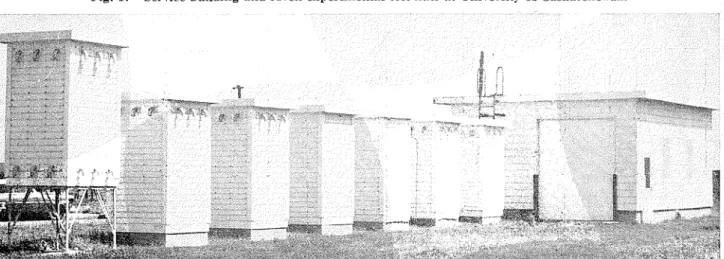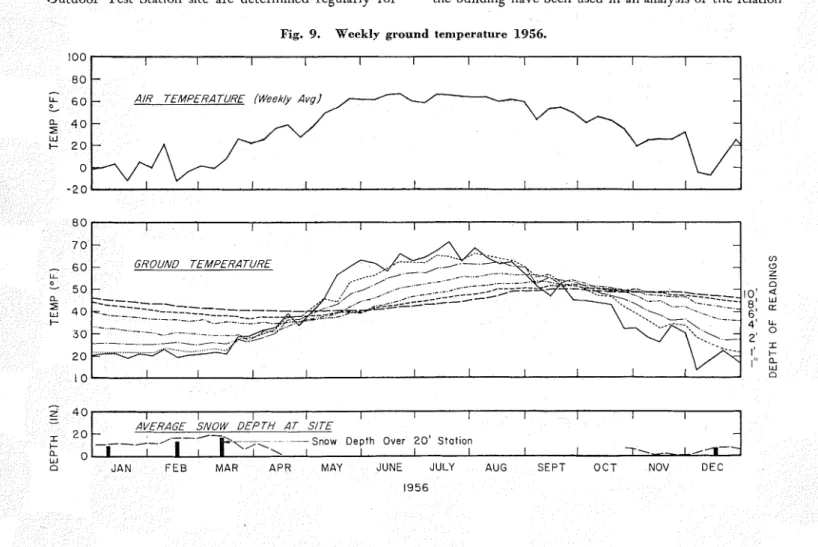Publisher’s version / Version de l'éditeur:
Transactions of the Engineering Institute of Canada, 3, 2, pp. 67-73, 1959-09-01
READ THESE TERMS AND CONDITIONS CAREFULLY BEFORE USING THIS WEBSITE. https://nrc-publications.canada.ca/eng/copyright
Vous avez des questions? Nous pouvons vous aider. Pour communiquer directement avec un auteur, consultez la première page de la revue dans laquelle son article a été publié afin de trouver ses coordonnées. Si vous n’arrivez pas à les repérer, communiquez avec nous à PublicationsArchive-ArchivesPublications@nrc-cnrc.gc.ca.
Questions? Contact the NRC Publications Archive team at
PublicationsArchive-ArchivesPublications@nrc-cnrc.gc.ca. If you wish to email the authors directly, please see the first page of the publication for their contact information.
NRC Publications Archive
Archives des publications du CNRC
This publication could be one of several versions: author’s original, accepted manuscript or the publisher’s version. / La version de cette publication peut être l’une des suivantes : la version prépublication de l’auteur, la version acceptée du manuscrit ou la version de l’éditeur.
Access and use of this website and the material on it are subject to the Terms and Conditions set forth at
Soil temperature measurements at Saskatoon
Solvason, K. R.; Handegord, G. O.
https://publications-cnrc.canada.ca/fra/droits
L’accès à ce site Web et l’utilisation de son contenu sont assujettis aux conditions présentées dans le site LISEZ CES CONDITIONS ATTENTIVEMENT AVANT D’UTILISER CE SITE WEB.
NRC Publications Record / Notice d'Archives des publications de CNRC:
https://nrc-publications.canada.ca/eng/view/object/?id=e487ea8a-6da2-4b33-a88e-b5f6b1c7782d https://publications-cnrc.canada.ca/fra/voir/objet/?id=e487ea8a-6da2-4b33-a88e-b5f6b1c7782d
SOIL TEMPERATURE
MEASUREMENTS AT SASKATOON
BY
K. R. SOLVASON AND G. 0 . HANDEGORD
R E P R Z N T E D F R O M
TRANSACTIONS OF T H E ENGINEERING INSTITUTE OF CANADA
VOL.
3,NO.
2,JULJT 1959, P.67-73
RESEARCH PAPER NO.
82OF T H E
DIVISION OF BUILDING RESEARCH
PRICE
10CENTS
OTTAWA
Soil
Temperature Measurements at Saskatoon
K.
R.
Solvason* and G. 0. Handegorcl M.X.1.C.fA soil temperature meanlrement installation z<si?zg copper- co?zsta?ztan thernzocouple is described. Jznctions were placed at vilriozrs levels d o u n t o I.? feet zuzder rind adjacent t o a n ~ l a l l heated bzlilding. T h e res71lts presented show ?mo?zthly iso- ther?lz plots for a vertical plane throzrgh t h e bzlilding a77d also the annzlal variation at severnl depths for a stntion 20 feet fro?^ the building.
I
T IS N A T U R A L that in Cdnada, with its extreme range of climate, there should be considerable interest in ground telnperatures. T h e solution of many construc- tion problems is dependent o n a knowledge of sub-surfacctemperature variation. It WAS f o r this reason that a
program of study was initiatcd b y the Division of Build- ing Research soon after its formation in 1917 under t h e National Research Council of Canada.
O n e of the first tasks was t o malte a search of the literature o n t h e subject. T h i s study1 revealed not only a substantial v o l u n ~ e of papers o n the subject but also an insight into a considerable amount of early Canadian work. T h e most notable historical w o r k was done b y Prof. H. L. Cal1endar"vho measured tenlperatures o n the McGill Canlpus t o a depth of 9 fcet beginning in 1894. Later, measurements w e r e inade a t the University of Sasl:atche.i\~an" and at the University of Manitobak. F o r 15 years, until 1939, temperature measurements t o a dcpth of 15 feet were madc in T o r o n t o b y the Canadian Mcteorological O f i c e .
T h e initial field studies b y the nen- Division of Building Research w e r e made at Ottawa beginning in 1948. T h e first results f r o m these studies, n7hich w e r e planned t o OResearch Officer, Division of Building Research, National Research Coul~cil of Canada.
iResearc11 Officer, Prairie Regional Station, (Saskatoon, Sask.), Division of Building Research, National Research Council of Canada.
h4nnuscript received 25 June, 1058.
assist in water worlts design, w e r e published i n 195Z5. T h i s was the beginning of a nunlber of cooperative studies across Canada n ~ h i c h a r e outlincd in a recent pi1blicati0116.
Soon aftcr the Ottawa studies were started a program of soil temperature n~easurements adjacent t o a sillall heated building n as initiated at t h e Division's Regional
Laboratory in Sasltatoo~~. Since 1949, records have been maintained of soil telnperatures a t various depths d o n n t o 15 feet a t distances u p t o 20 feet f r o m the walls of this structure, as n ell as a t 1oc:ltions within the founda-
tion walls and beneath o t h e r portions of t h e building. Conlplete analysis of these records as they relate t o heat loss to the ground has not yet bcen made, but numerous rcquests have been received f o r t h e basic soil temperature records. T h i s r e p o r t has becn prepared t o provide a description of the test installation a ~ l d to record sonle of t h c soil tcmperature results ~ v h i c h have been obtained t o datc.
DESCRIPTION O F THE INSTALLATION
T h e building involved i n the soil tenlperature instal- lation functions as a scrvicc building f o r sevcn esperi- mental test huts located o n the campus of t h e University of Saskatcheaan. This test facility is shown in Fig. 1.
T h c service building is of fraine construction, approxi- mately 20 b y 26 feet in plan dimcnsion, with t h e long di~nension oriented duc east and west. A basement under t h e northcrn third of the building (Fig. 2 ) provides access t o a tunnel that cxtcnds some 60 feet t o t h e west irnmcdiately bencath the test huts. T h e basement ~valls a r e of plain concrete, 8 inches thick, extending 8 feet belon ~ r a d e V t o conventional footings. T h e basenlent D
floor consists of 3 inches of concrete over a 5-inch gravel fill. T h e area above the basement is used f o r office and instrument space.
contained the t
thermocouples are used as temper- T h e thermocouples measuring soil ts. This choice was made largely depths of 2, 4, 6, 8, and 10 feet outside th
nipples located at the 0, 1, 2,
epths. These were installed nt with the sections below
ONE COAT ASPHALT r -PAINT BEFORE ASSEMBLY
service building where the thermo- A S S E M B L E D
were connected to a terminal board.
Fig. 3. Thernlocouplc uni
priate hole to form a copper and a on the top and bottom edge of the Connection to the measuring appar-
CORK STOPPER
ings of the deeper thermocouples on successive days. THERMOCOUPLE CONNECTOR SYSTEM
W h e n the above procedure was followed, successive readings on these thermocouples agreed to well within *O.l°F.
SNOW COVER SNOW COVER ON SURFA
Fig. 5. Gronntl temperature isotllerll~s for Marrh 23, 1956.
Fig. 7. Ground temperature isotl~ern~s for September 28, 1956.
Fig. 8. Ground temperature isotherms for December 21, 1956.
SNOW COVER SNOW COVER O N SURFA
T h e moisture co
eek since that time. a nlarlted d r y i n g out of the
8- or 10-foot depth. T h i s m
the fact that t h e site was
CONCLUSION
Measurements made at t h e location 20 f e e t utdoor T e s t Station site are determined regularly f o r the building have been used i n an analysis of t h e relatio
Fig. 9. Weekly ground temperature 1956.
TABLE I.
-
Soil Classification and Moisture Content Twenty Feet South ofRiloisture Conlent Soil Classification





